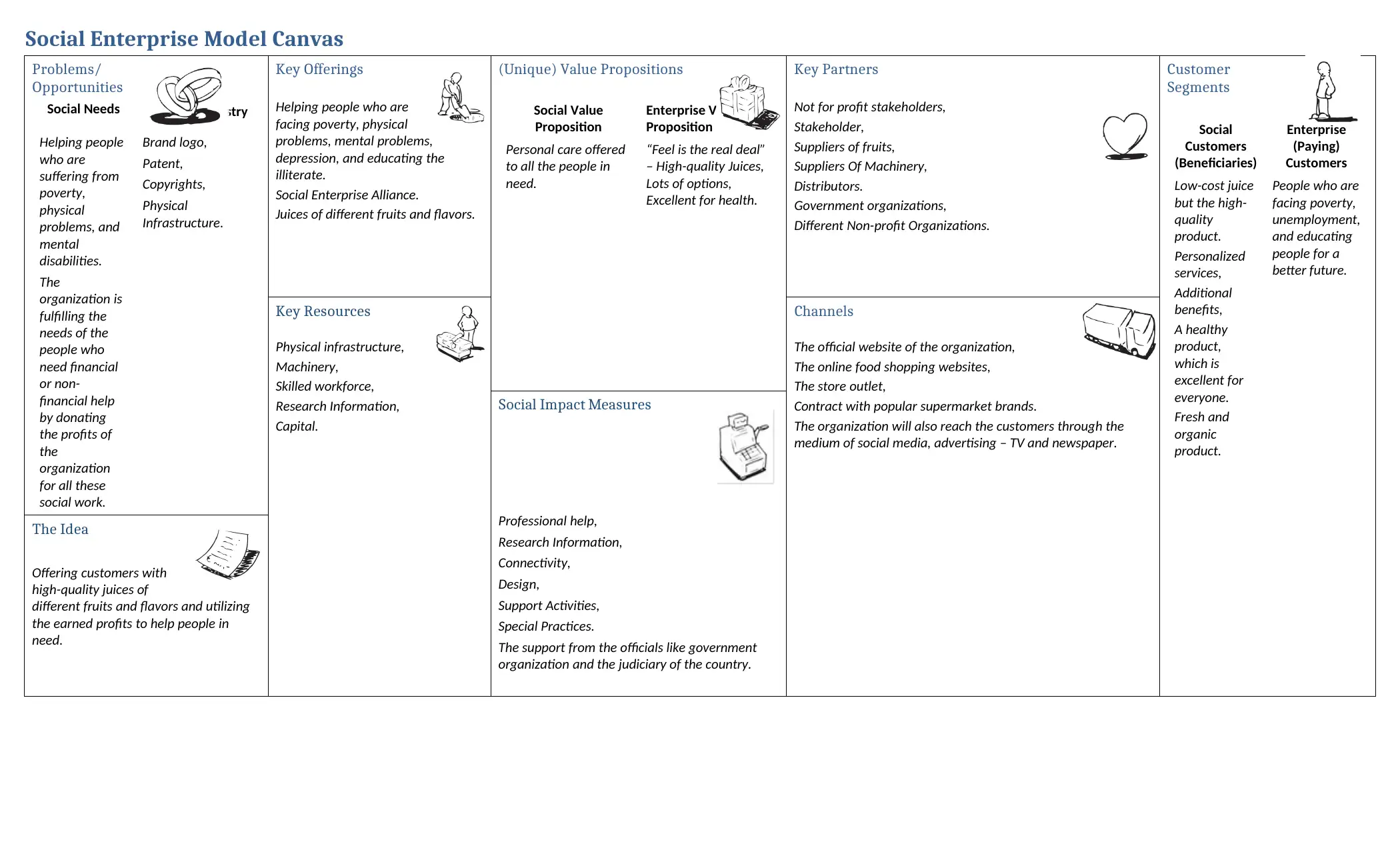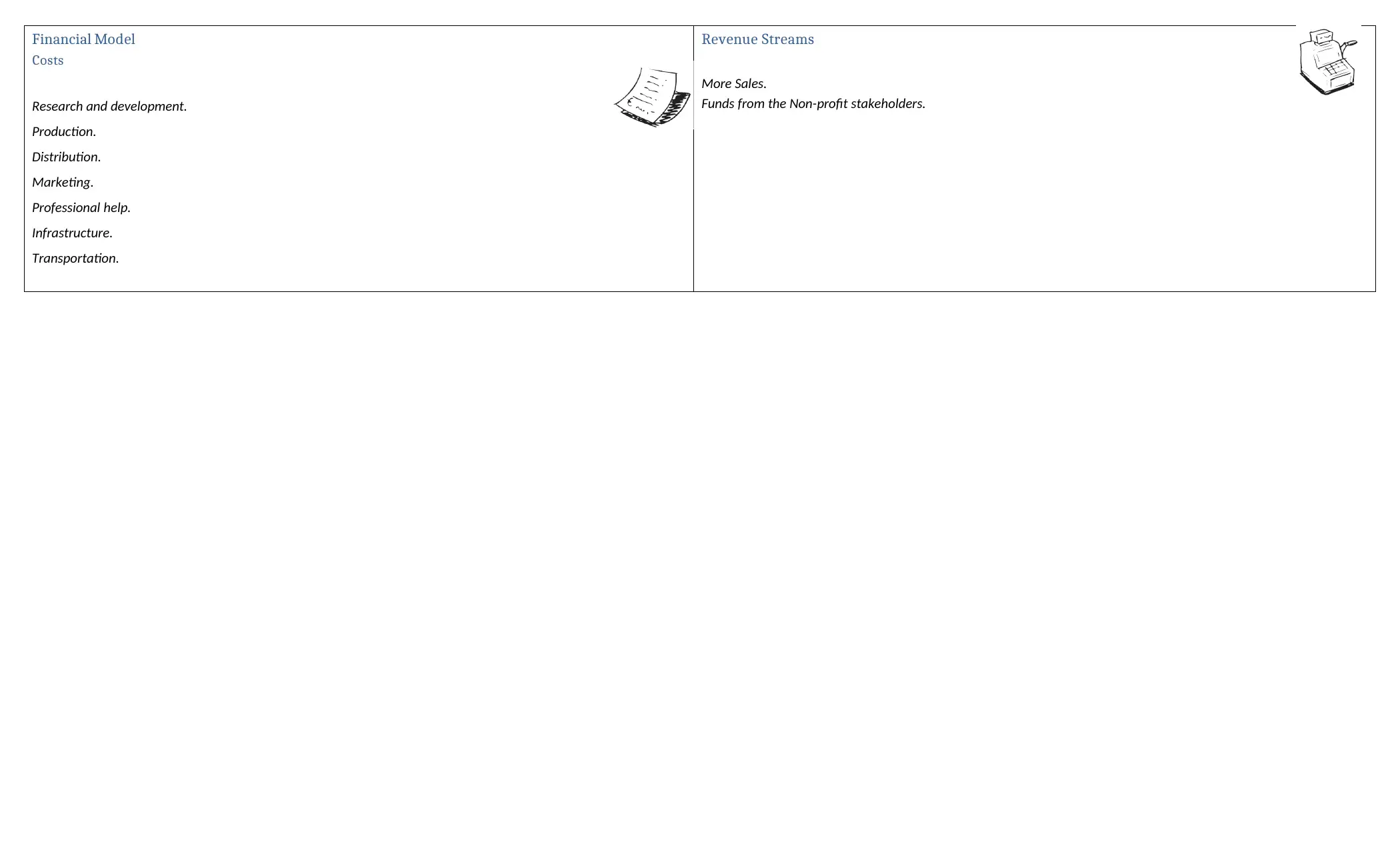Social Enterprise Model Canvas: A Case Study of Feel Juice Company
VerifiedAdded on 2023/03/21
|2
|364
|40
Case Study
AI Summary
This case study examines Feel Juice Company's social enterprise model canvas, highlighting its dual focus on offering high-quality juices and addressing social needs. The company's success hinges on its social and enterprise value propositions, promising excellent customer experience and dedicated support to individuals facing poverty, physical and mental health challenges, and illiteracy. Key partnerships provide essential financial and non-financial resources, while revenue generated from juice sales directly funds social initiatives. The model aims to create a sustainable cycle of business and social impact, measuring success through professional help, research, and community support, thus building a business that addresses social problems.
1 out of 2







![[object Object]](/_next/static/media/star-bottom.7253800d.svg)